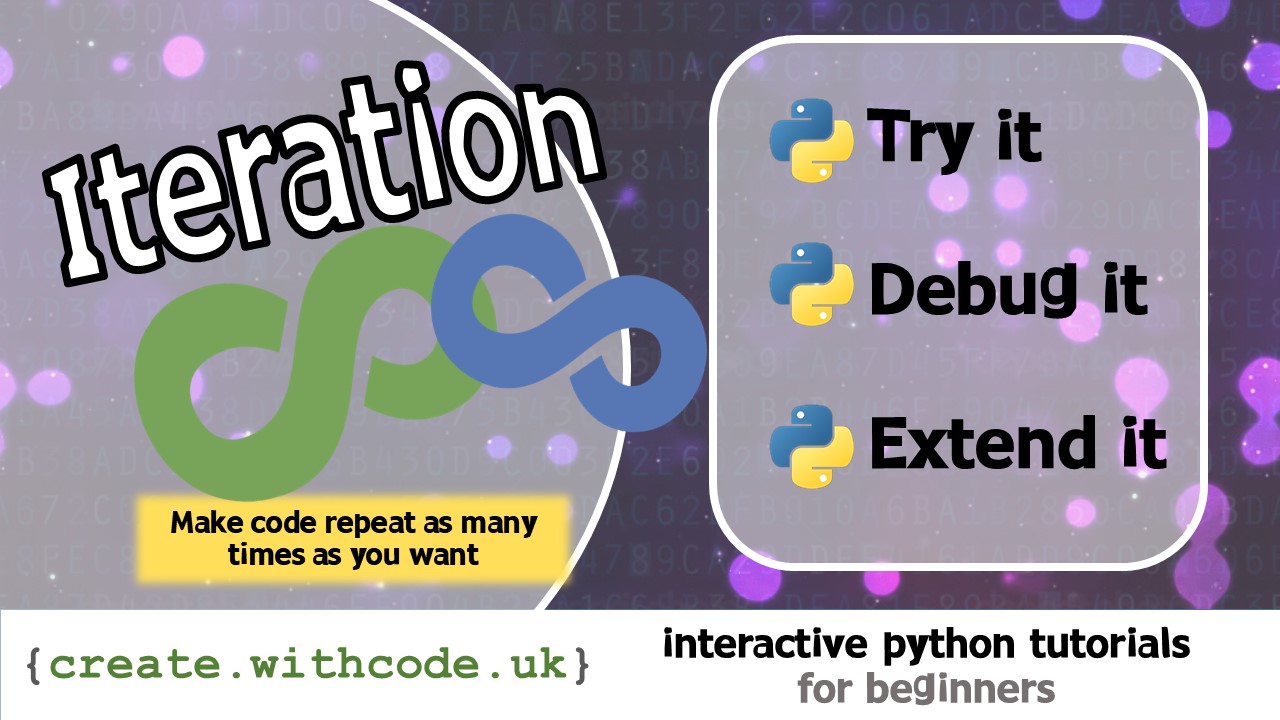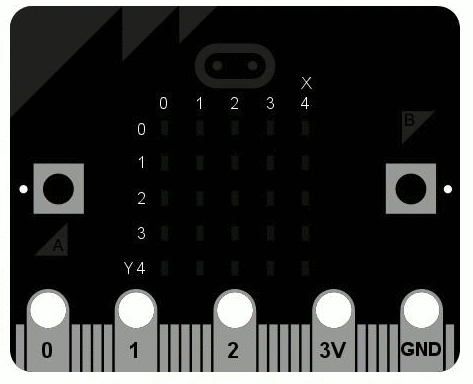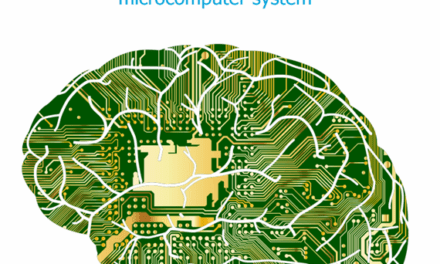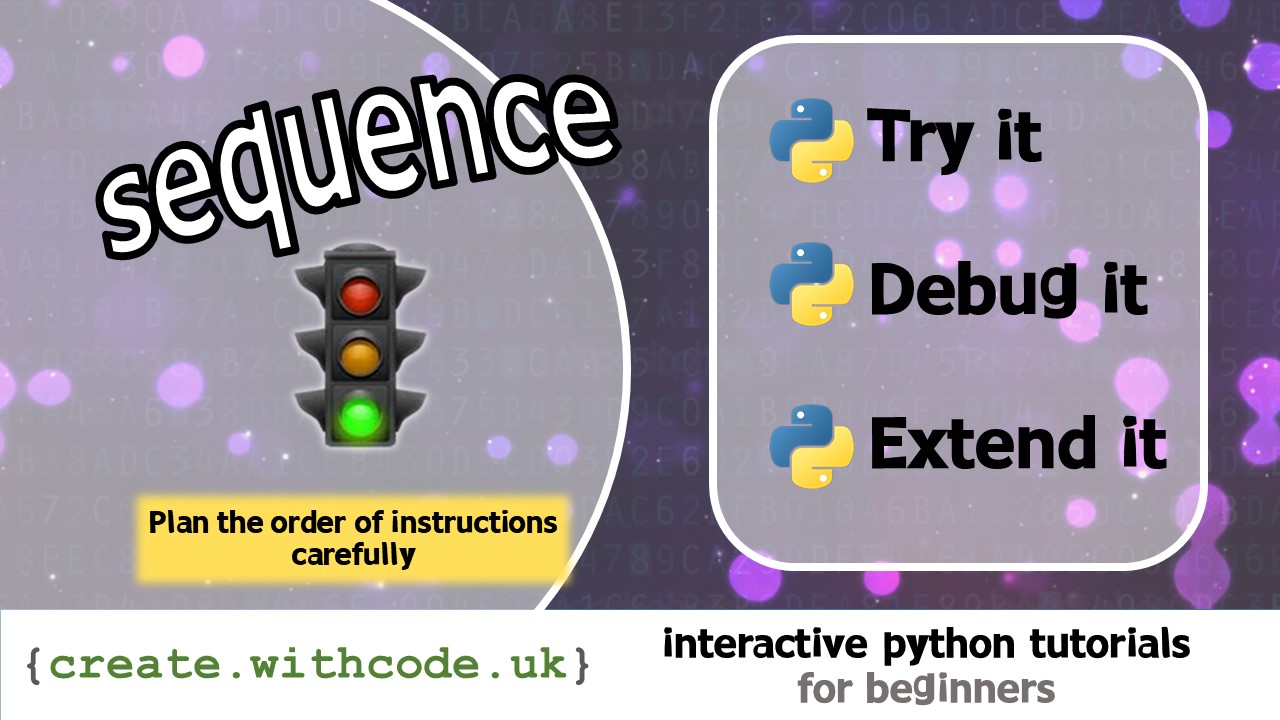The Theory:
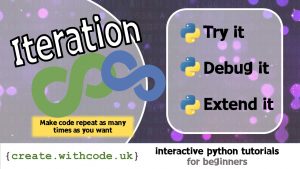
There are two types of iteration: definite iteration and indefinite iteration.
Both definite and indefinite iteration involve repeating a section of code multiple times.
Definite iteration is when you know exactly how many times your code will repeat (e.g. a
forloop)Indefinite iteration is when you don’t know exactly how many times your code will repeat: it might repeat forever (e.g. a
whileloop)
Definite iteration
Definite iteration is useful when you want to repeat a section of code a specific number of times, for example, performing the same operation on each item in a list.
In Python, you can use a for loop to iterate (repeat) through a list of values.
The code above uses the variable i to iterate through each value in the range from 0 to 9. This works as a loop. The first time the loop repeats i is set to 0. The next time i is set to 1 and this keeps repeating until i is set to 9.
The code above uses the variable a to iterate through each value in the list of animals. The code that is indented repeats once for each value of animals using a to store the current value.
Definite iteration is often called count-controlled iteration because the number of times the code repeats is controlled by a number.
Indefinite iteration
Indefinite iteration is often called condition-controlled iteration because the number of times the code repeats is controlled by a boolean expression
A boolean expression is a value or combination of values / variables / functions which evaluate to an answer of either True or False
For example:
The example above repeats while the count_down variable stores a value which is greater than 0. The boolean expression is count_down > 0 which is either True or False depending on the value of count_down.
Sometimes it’s useful to repeat until a condition is met. The example below will repeat until the user types in “yes” to the irritating car journey question of “Are we nearly there yet?”
Page 1: Intro
Page 2: The theory: learn what you need to know as fast as possible.
Page 3: Try it: try out and adapt some working python code snippets.
Page 4: Debug it: Learn how to find and fix common mistakes.
Page 5: Extend it: Choose a project idea to use your newfound python skills.
